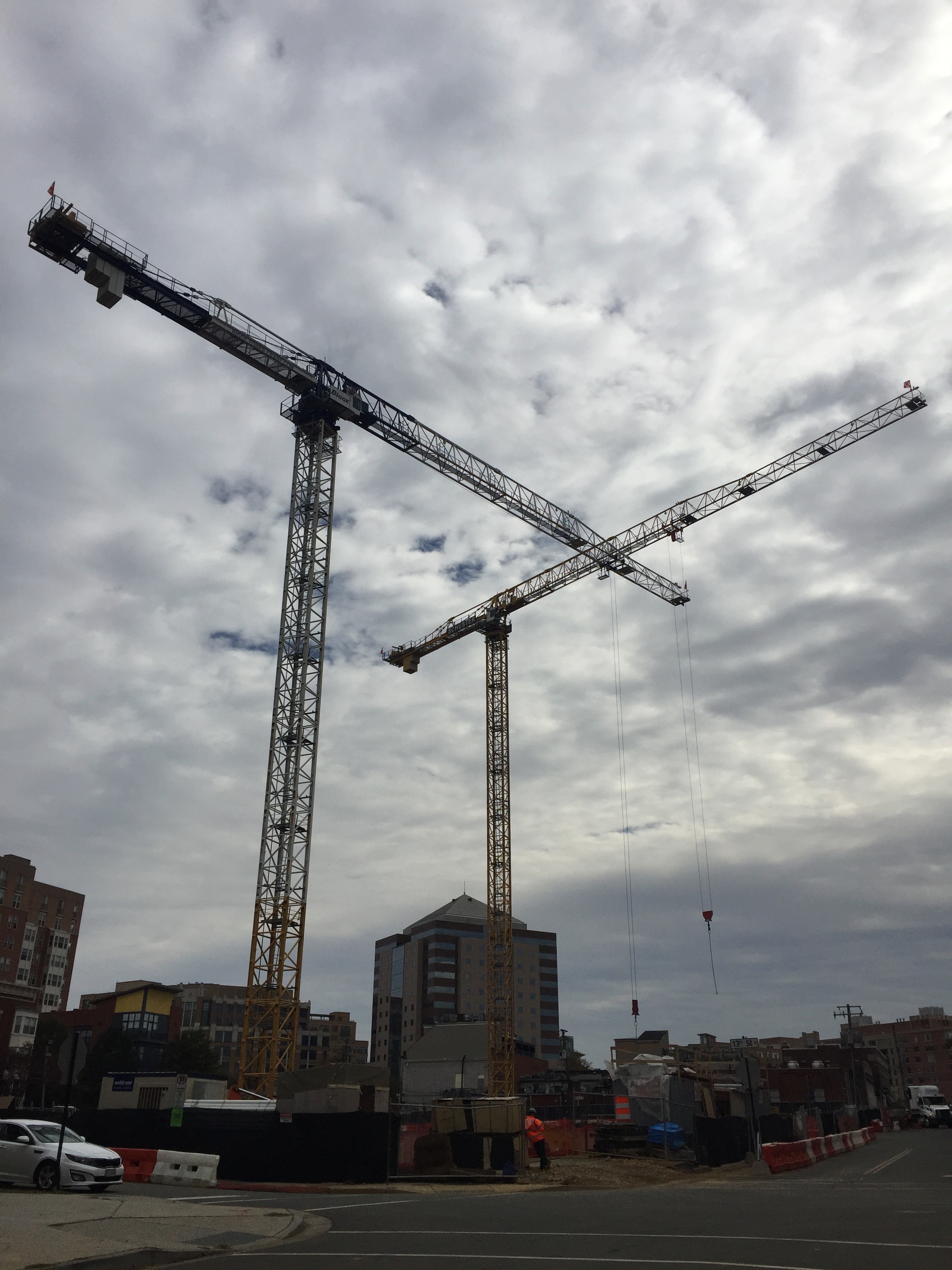When a construction site is next door
By Peggy Ashbrook
Posted on 2019-11-05

Street closures and high noise levels from construction on or near school grounds or other early childhood programs may disrupt the daily routine. Using the engineering habit of mind of optimism, defined as “a world view in which possibilities and opportunities can be found in every challenge and an understanding that technology can be improved” (Katehi et al., 2009, p. 152) educators at the Clarendon Child Care Center, Kathy Connell, Sarah Abu-El-Hawa, and Carly Gertler used the occasion of children’s interest in the cranes at the on-going construction to bring materials out to the playground for children to create their own cranes in 2-D and 3-D representations.
Welcome Kathy, Sarah, and Carly!
Our inspiration for this project presented itself in the construction site diagonally across the street from our playground. Each day as we walked to the playground our group of 16 four and five year-olds noticed the cranes and commented on their presence along with their characteristics. The children talked about how high the cranes stood, how the jibs extend out further from the site—even above the playground, the flapping flags at the ends of the jibs, and the hoists attached to the jibs that lifted building material from the flatbed trailers parked on the streets onto the worksite.
Kathy set out a short row of chairs on the playground and clipboards with paper and markers. The children accepted this invitation and drew their impressions of the cranes. We also set out Mobilo manipulatives on the picnic table and children built their own versions of cranes. By printing with paint using the Mobilo shapes children created 2-dimensional cranes. Photos of cranes by Kathy’s father contributed information on other types of cranes.




Photos by the teachers at Clarendon Child Care Center.

The next day we provided a straws and star connection building set and children continued to “build up.” Building with magnetic tiles in the morning sun on days that followed extended the children’s understanding of how large structures are made of smaller units. The light shining through the tiles cast jewel-toned shadow shapes surprising the children and added to their design. In discussion with the construction site manager teachers helped children think about the height of the crane by figuring out how many children would need to stand head-to-feet to be the same height as the (more than 200 foot tall) crane.
The teachers made the children’s work visible to their families, other classes, and the children themselves by creating a documentation panel on the wall. (The classes show their creativity in another way–the names they choose for themselves!) The children’s documentation shows that some are aware of the diagonal cross pieces in the jib and tower. I wonder if sometime they will explore the use of diagonals and triangles in structures, perhaps using K’nex or other building materials.
Resources
Katehi, Linda; Pearson, Greg; & Feder, Michael (Eds.). (2009). Engineering in K-12 education: Understanding the status and improving the prospects. Washington, DC: National Academies Press. https://www.nap.edu/catalog/12635/engineering-in-k-12-education-understanding-the-status-and-improving
Van Meeteren, Beth and Betty Zan. 2010. Revealing the Work of Young Engineers in Early Childhood Education. SEED Papers: Published Fall 2010, Early Childhood Research & Practice, University of Illinois at Urbana-Champaign. http://ecrp.uiuc.edu/beyond/seed/zan.html
Disclaimer: The views expressed in this blog post are those of the author(s) and do not necessarily reflect the official position of the National Science Teaching Association (NSTA).





